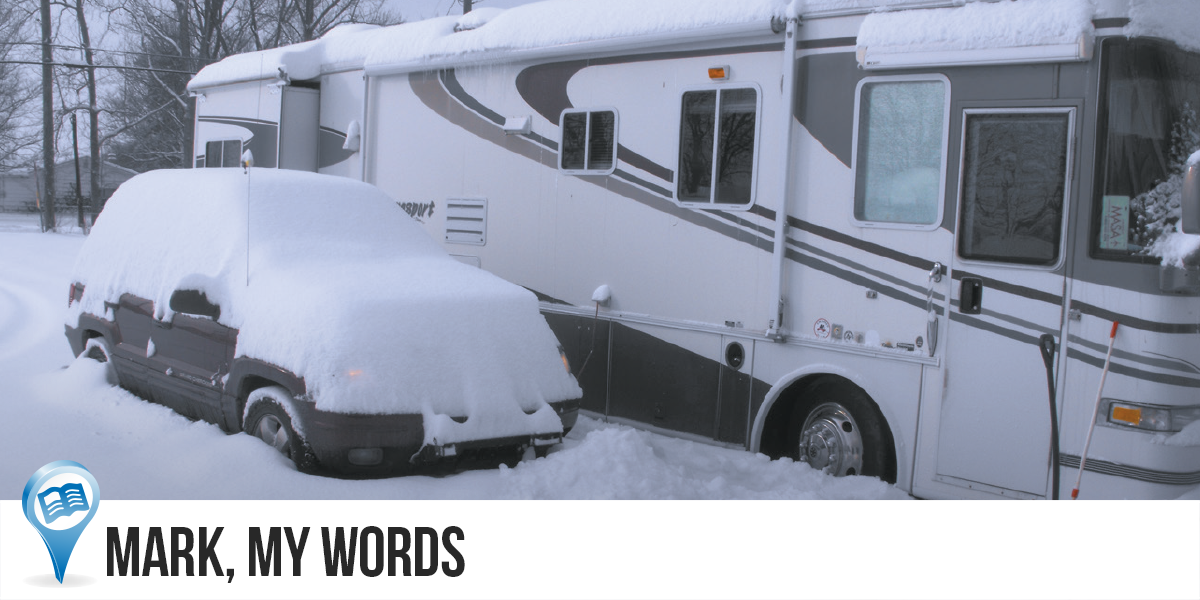Carbon Monoxide Detector
Q. We do not currently have a carbon monoxide (CO) detector in our travel trailer. Are there specific units for travel trailers, or would a house unit work? I saw a combination unit for propane/CO. Is this a better alternative? Also, how often should propane and CO detectors be replaced?
– Dave
I am surprised to hear that there is a combination propane/CO alarm as the density of propane is greater than air, so it sinks to the floor. Carbon monoxide is slightly less dense than air, so it tends to rise. If you mount a combination detector near the floor for propane, it will not be in a good position to sense CO. I would avoid such a product.
Most propane and CO detectors do have a lifespan of five to 10 years, and most have a self-diagnostic function that will indicate when the detector is malfunctioning and needs to be replaced. If I have a 10-year-old detector or smoke alarm, I replace it based on the “better safe than sorry” rule. Always test detectors and alarms before each trip starts and at least once a month while traveling. Replace batteries (if battery-powered) yearly. Here’s an example of an RV-rated CO alarm with digital display: escapees.com/url/014
Q. I have been an Escapees member for a number of years and have never seen this subject in your column. At an SKP gathering, the subject of using the electric side of the water heater was discussed. The general consensus was, to conserve electricity, you should only turn on the water heater when needed as opposed to leaving it on all the time. Will turning it on and off as needed do any damage to the water heater, and would it be better to just leave it on when hooked to shore power?
– Gary
A. My experience has been that the electric element will last longer if you only turn it on when you need hot water. The heating element has a service life in operating hours, so the fewer the hours it is in use, the longer (calendar-wise) it will last. Even when you leave it on all the time, the element cycles on and off based on temperature, so it is really no different; you just heat and maintain the water 24 hours a day rather than only when you need it. It costs more in energy usage to leave it on.
Leaking Gray-water Tank
Q. We own a 1999 Tropi-Cal motorhome built by National RV. The company is now out of business. The gray-water tank is leaking when it gets about 2/3 full. The tank was put on the chassis over the gas tank, and the floor and bathtub were then installed over the water tank. Because of this installation, there is no way to get to the gray-water tank to repair it. We dry-camp a lot and this leak is a real problem. Do you have any idea about how to fix it? Is there something we can put into the tank that would seal it from the inside or some way to get to it that we haven’t considered?
– Gary
A. That is a real problem, and I don’t know of anything that can be applied from (or to) the interior of the tank to fix a leak. Can you see the tank at all? If any of the tank fittings are visible, eyeball them carefully for leaks. Most tank leaks are around a connector or sometimes around the tank sensor probes. You might get lucky and be able to identify and repair the leak without tearing everything up.
If you can’t see it at all, or the leak is not around an accessible fitting, then the only option is to get access to the tank. Is it possible to drop the fuel tank to get access to the gray tank? If not, there really is no choice but to tear up the floor to get to it. Bad design choices like that are all too common in RV construction.
Once you can get access to the tank, it is often fairly easy to fix. I have used eternabond tape, designed to patch roofs, with good results on several different tank materials. That stuff really sticks! If your tank has a crack or split that is structural or caused by poor support of the tank, you may have to replace the entire tank rather than trying to patch it. If you are faced with replacing a tank, be sure to contact El Monte Plastics. They have been an OEM RV holding tank supplier for more than 40 years, and they can provide a wide range of older and obsolete tanks for RVs, as well as newer stuff (www.elmonteplastics.com/oemrvholdingtank.html). The Tank Depot is also found to be a good holding tank source (www.tank-depot.com).
I don’t envy you your project! I recently had to replace my black tank on my class-C. It was poorly supported and developed a stress crack. All attempts to seal it failed, so I had to replace the whole tank and fix the support problem. El Monte was able to supply a brand-new tank that was an exact match for the old one, and my RV is an 1984 model! Thankfully, my tanks were exposed and accessible under the RV, so it was not that bad a job.
Q. Is blowing out your plumbing system enough, or should you always add antifreeze? Also, We’re taking trips through January about every three to four weeks. Do I need to winterize after each trip before the next or is there something I can do instead?
– Brad
A. In my opinion, blowing out the water lines with air is fairly effective when you are storing the RV in a somewhat mild climate where the temperature falls below freezing at night but warms up a bit during the day. For storing in really harsh climates, where it gets down into the below-freezing zone and stays there, anti-freeze is really the only way to go. Your RV owner’s manual should have a section on winterizing. Be sure to follow the steps to get all of the water out and fully protect the entire plumbing system.
There are a number of online guides for winterizing: just type “winterizing the RV” into any search engine and you’ll turn up many of them. If you plan to use the RV after it is winterized, you will either need to de-winterize it for the period of use and then re-winterize it each time or leave the fresh-water system winterized and drink bottled water and minimize use of your plumbing system while camping. One possible alternative is to either find a heated storage place for the RV or keep the furnace or heater running in the RV during storage to prevent the water system from freezing. However, you have to be really sure that the method you choose will truly protect the plumbing or you’ll be fixing broken pipes.
Q. My RV trailer came with maintenance-free, deep-cycle Battery Pro batteries and a solar panel that charges them when they get low. Can the electrolyte level in the maintenance-free batteries still be checked, or does it even need to be checked?
– Loren
A. Most maintenance-free batteries are not truly sealed, and if the caps can be removed, distilled water can be added if needed. You’ll have to look at the tops of your batteries and see if they have any removable caps. If they are truly sealed batteries, then water cannot be added. The only sealed deep-cycle batteries that do well in RVs are the AGM (absorbed glass mat) batteries available from solar equipment suppliers. These batteries are truly 100-percent sealed and are very tolerant to the kinds of use and abuse that are typical in an RV. They’re quite expensive but are perfect for installations where venting of gases or access to the batteries for adding water are problematic. If your batteries are AGMs, then there is no maintenance needed other than occasional cleaning and tightening of connections. There are some good descriptions of the various types of batteries on my 12volt Web pages. Check it out at www.marxrv.com/12volt/12volt.htm.












